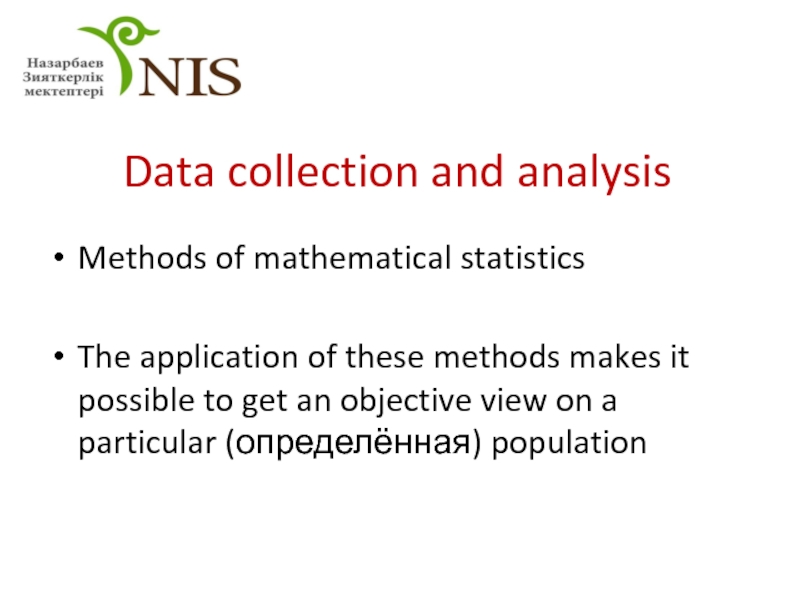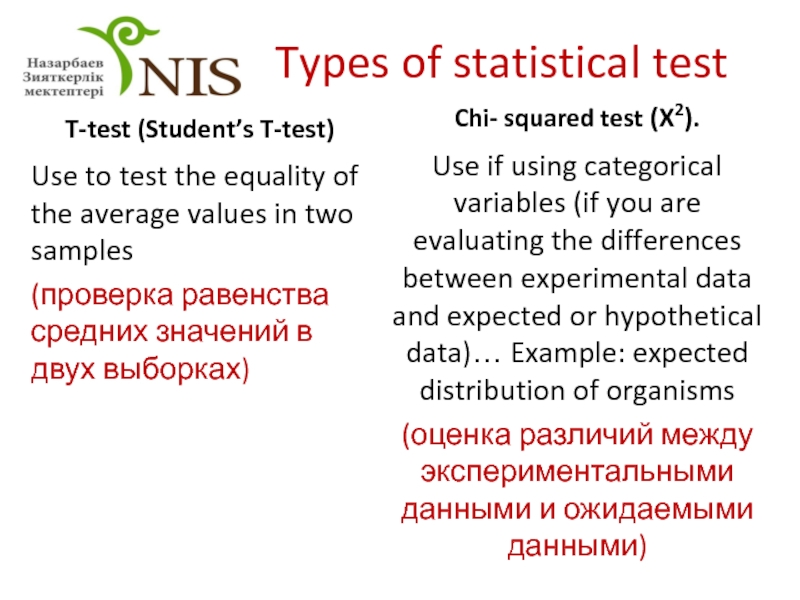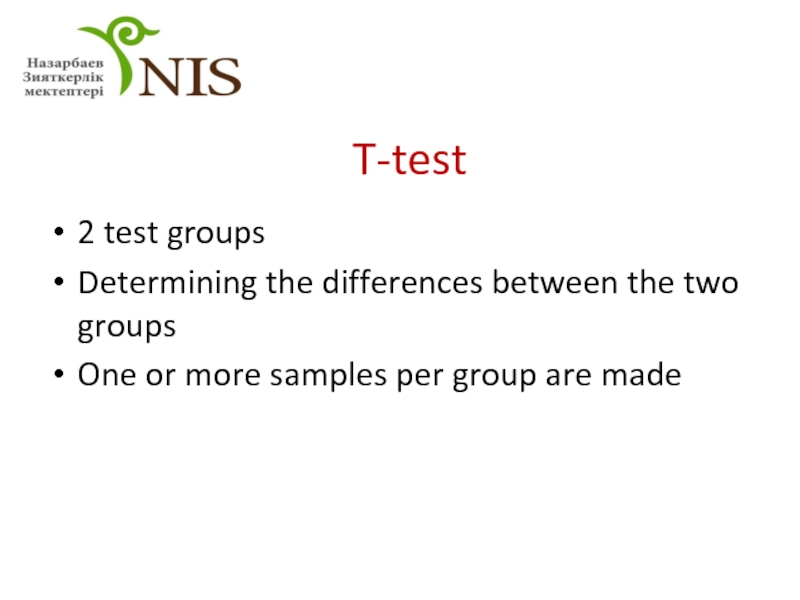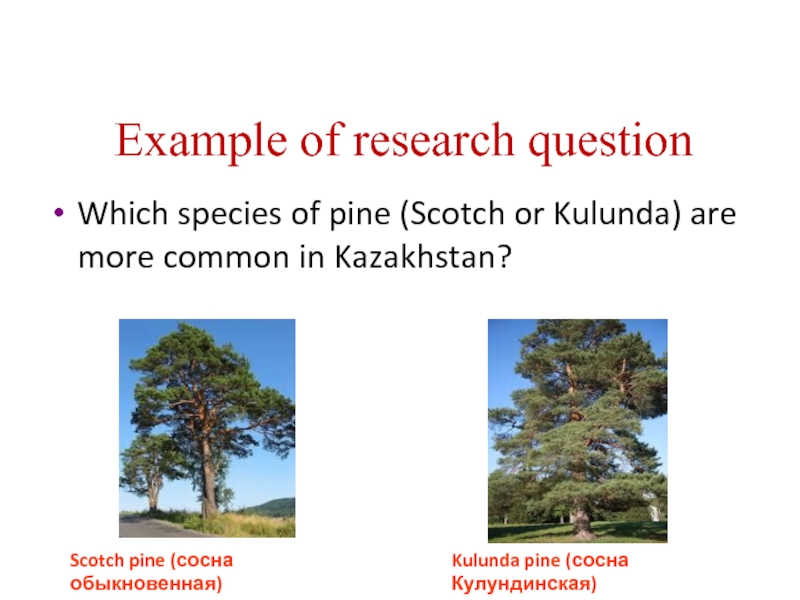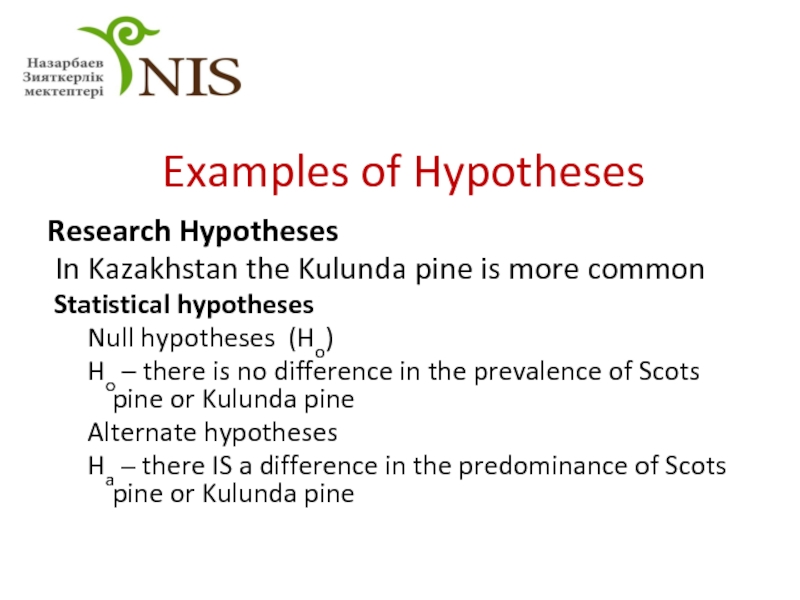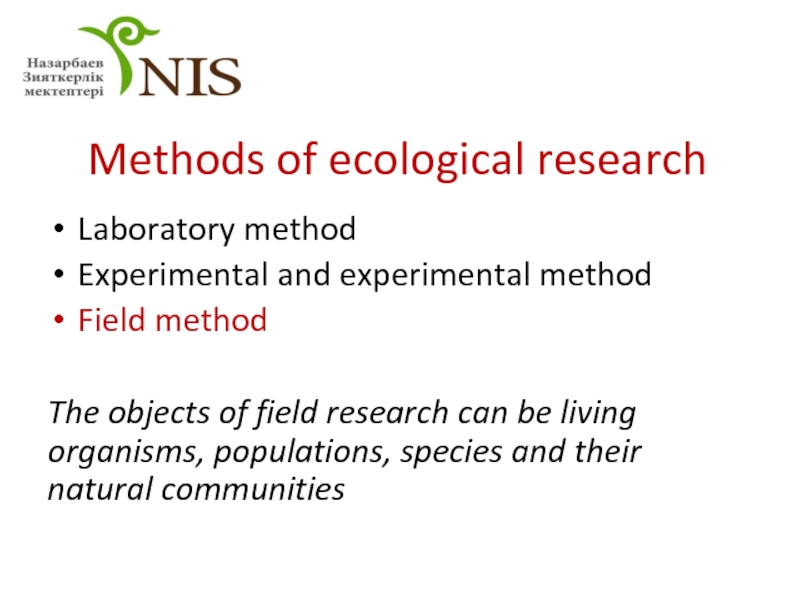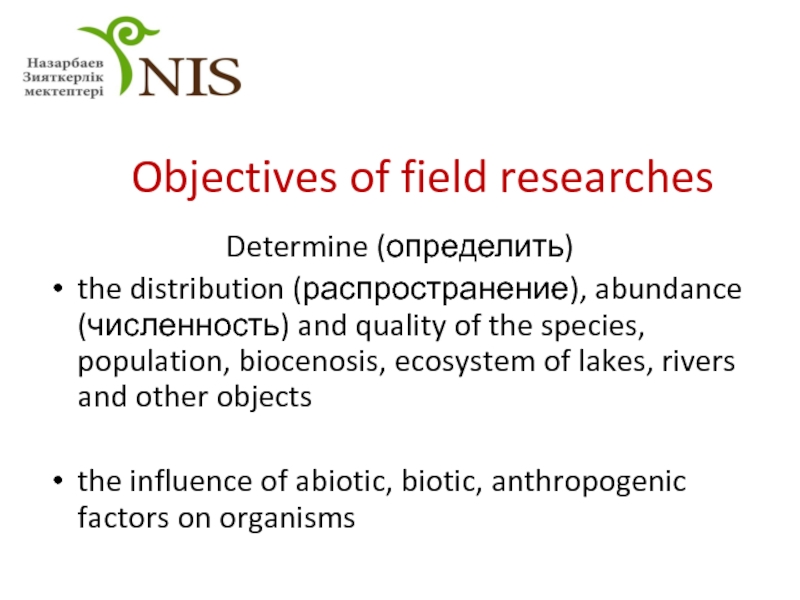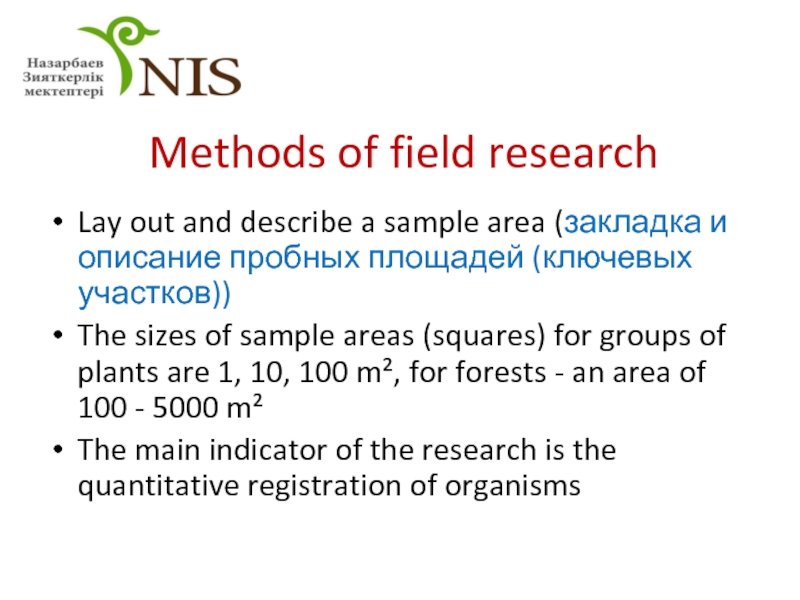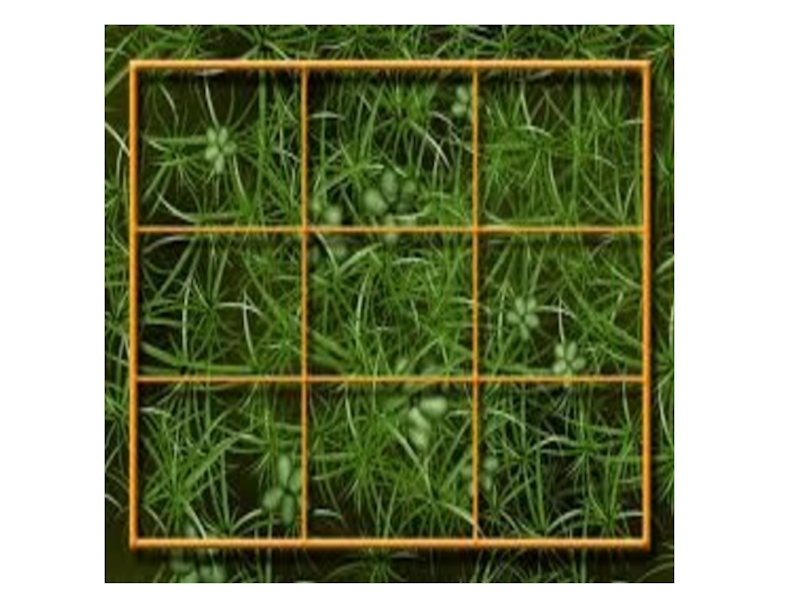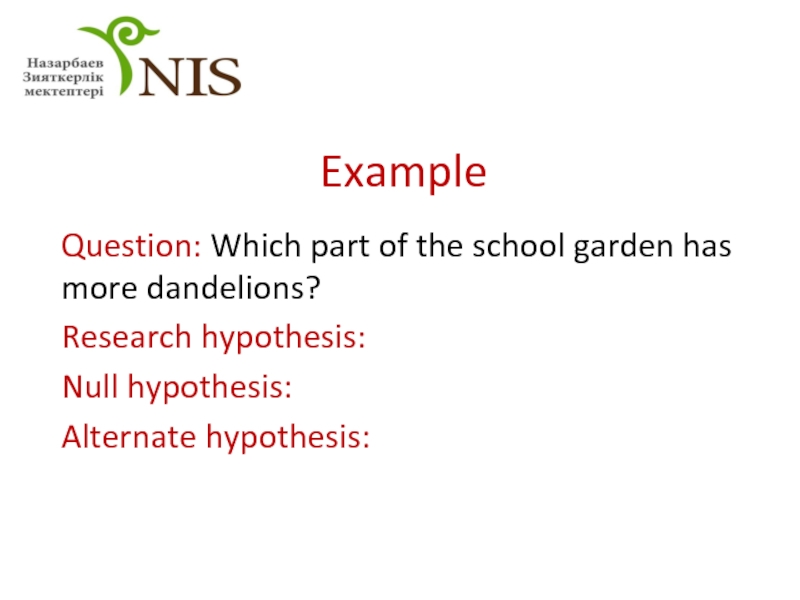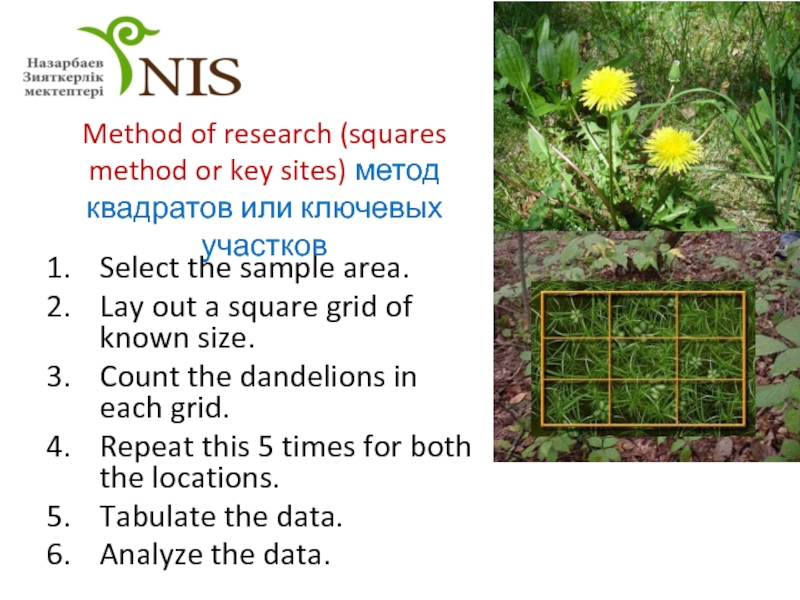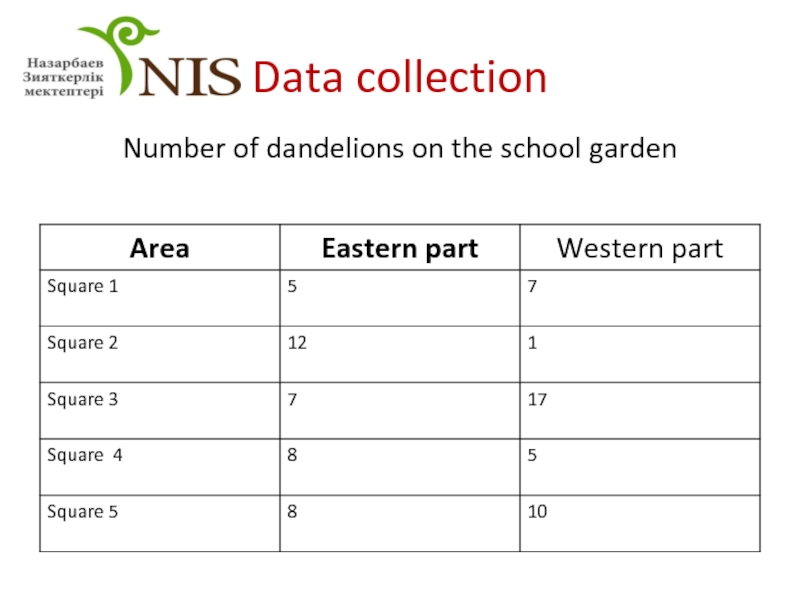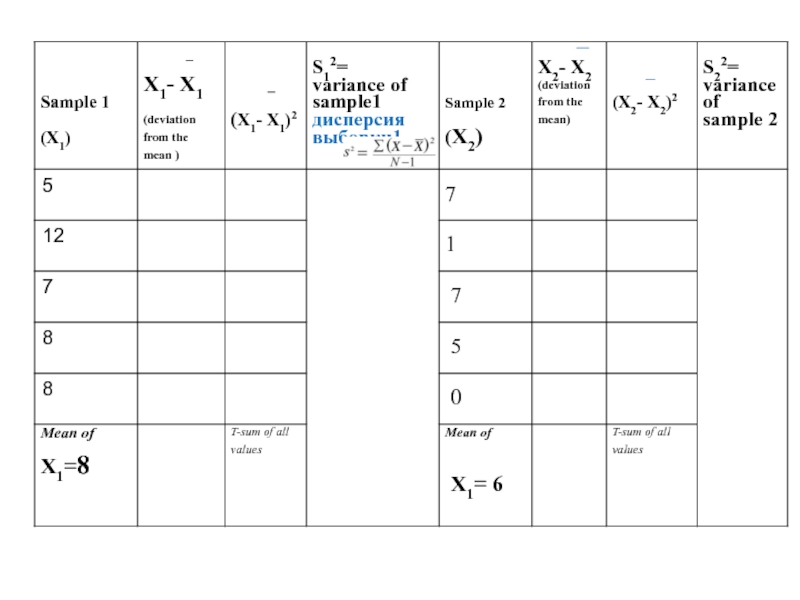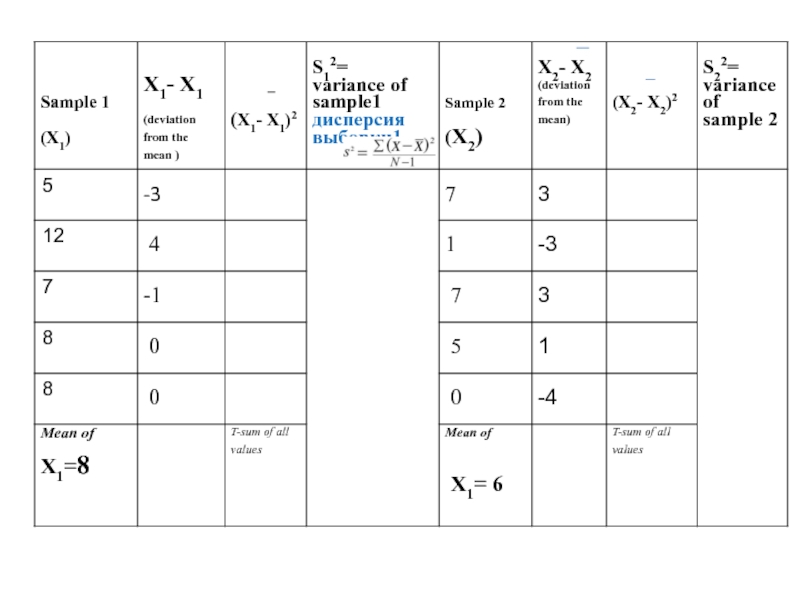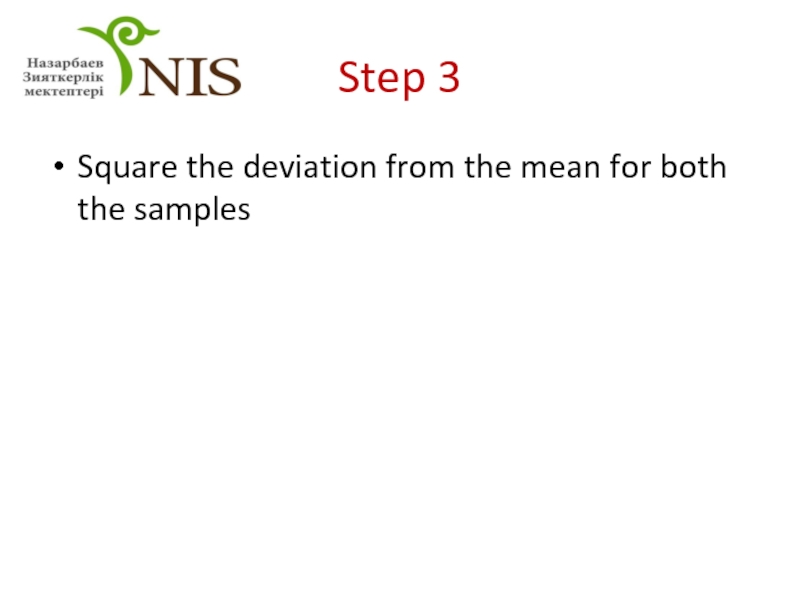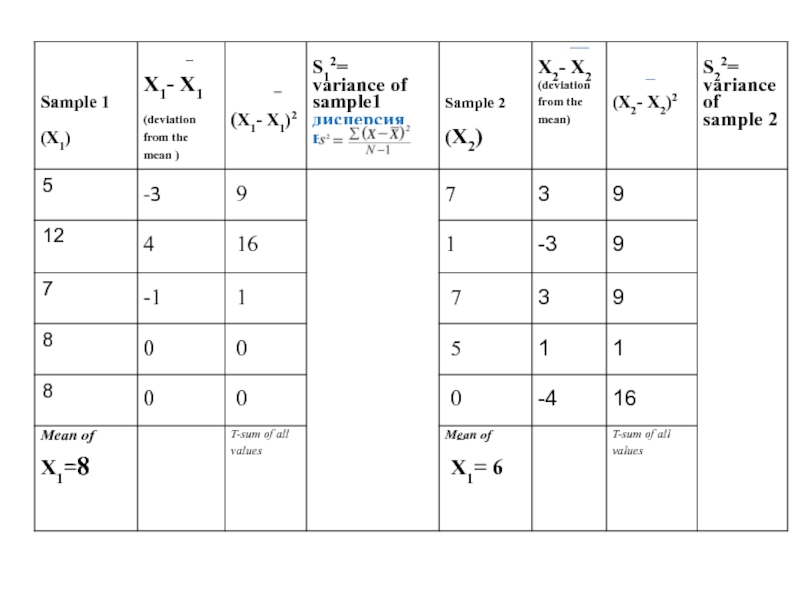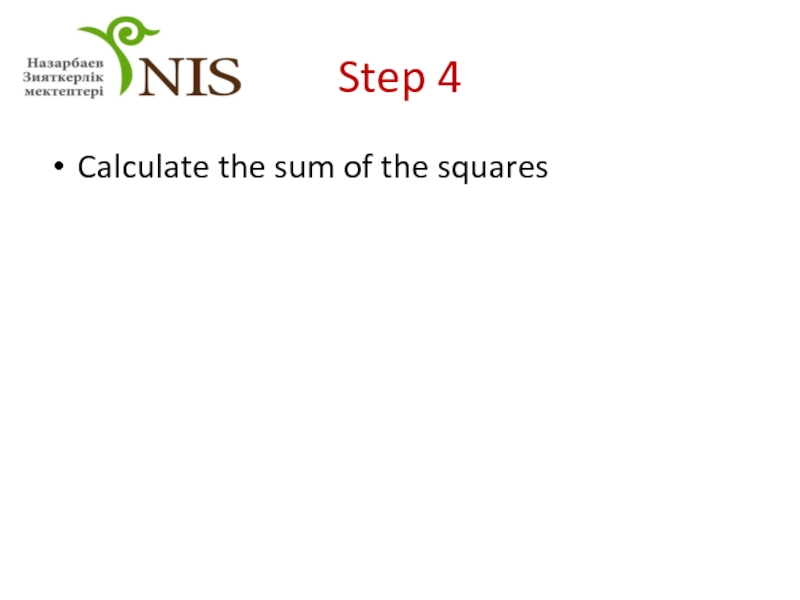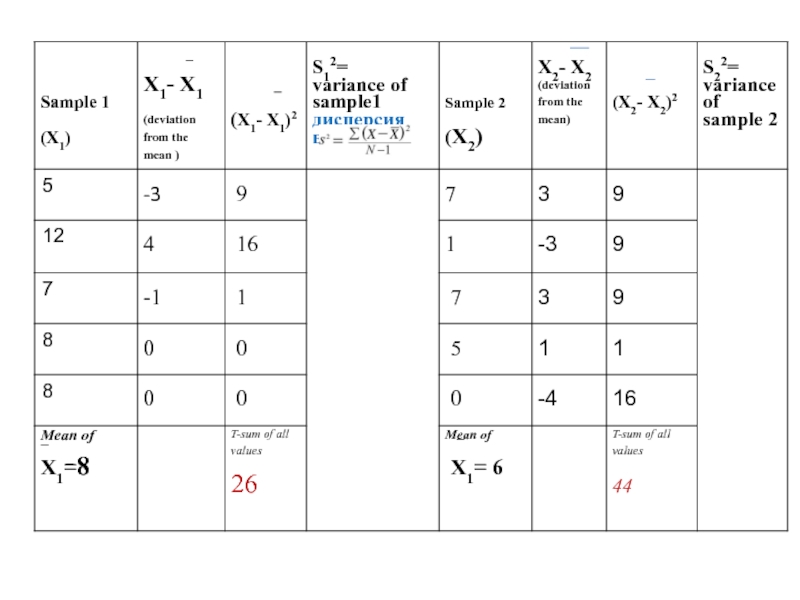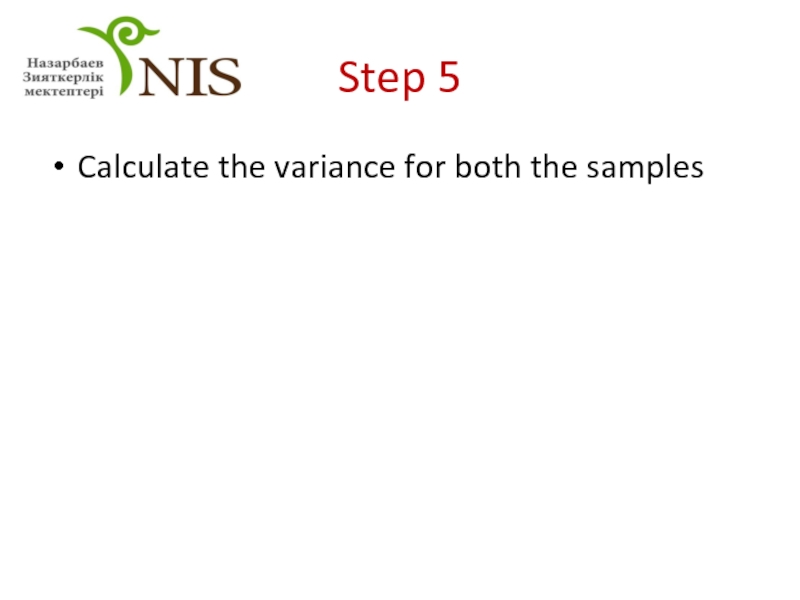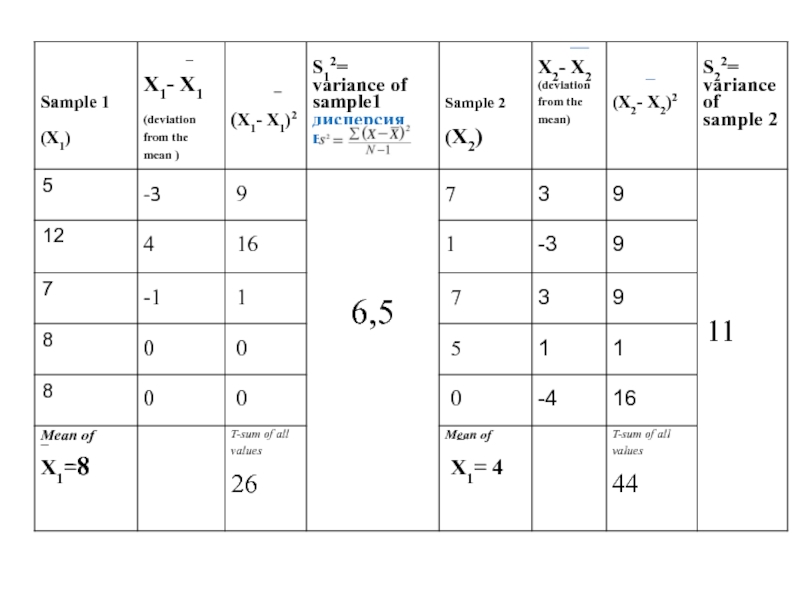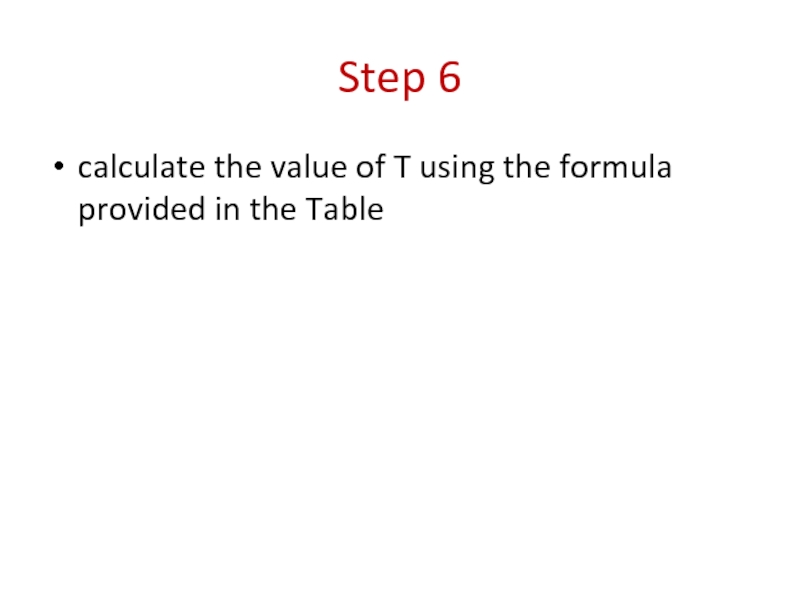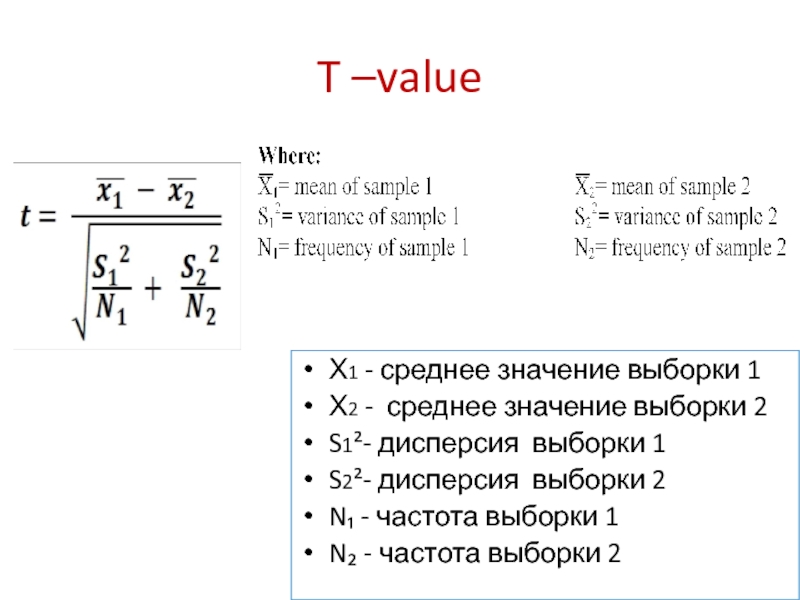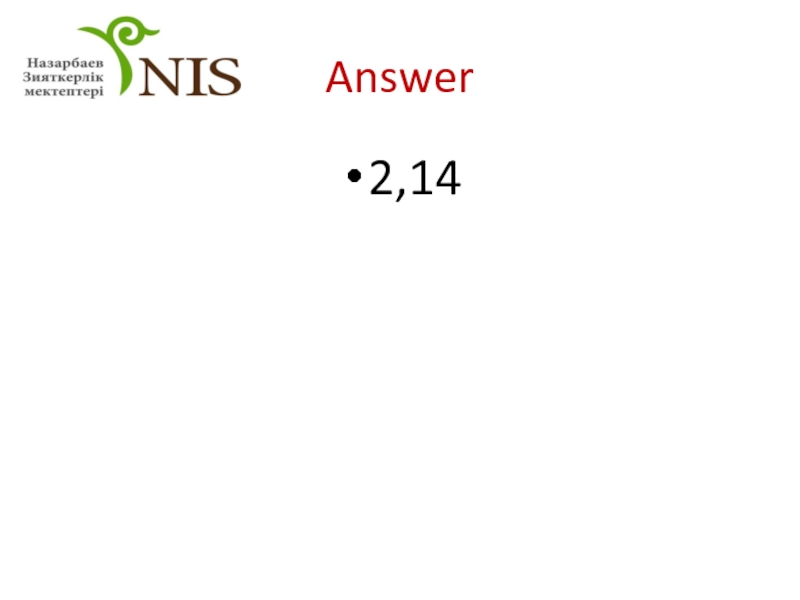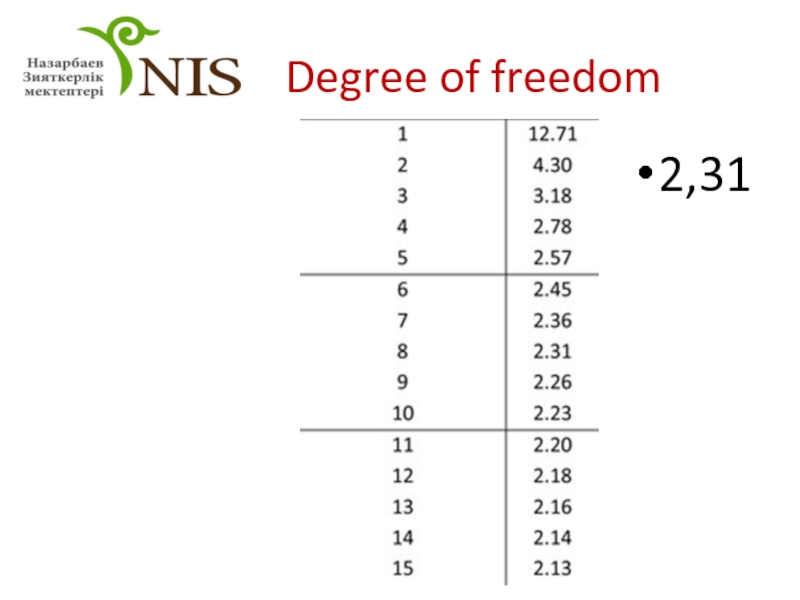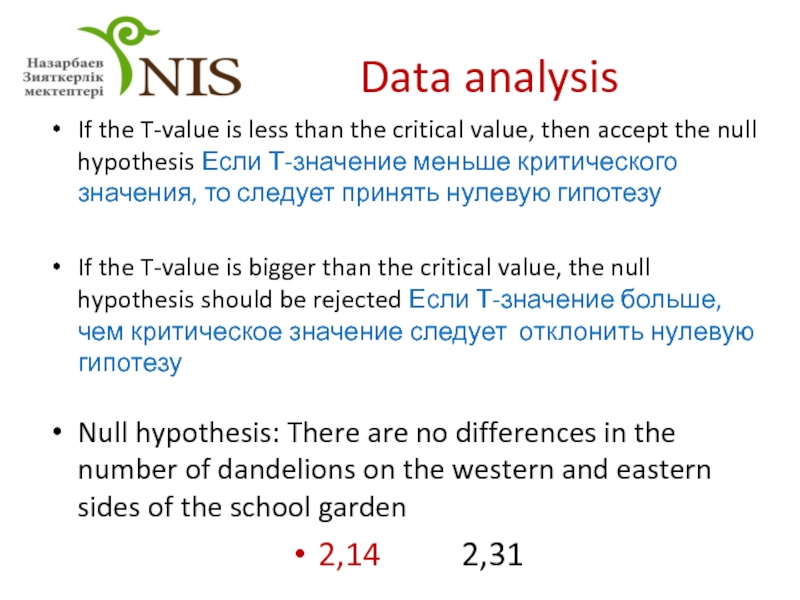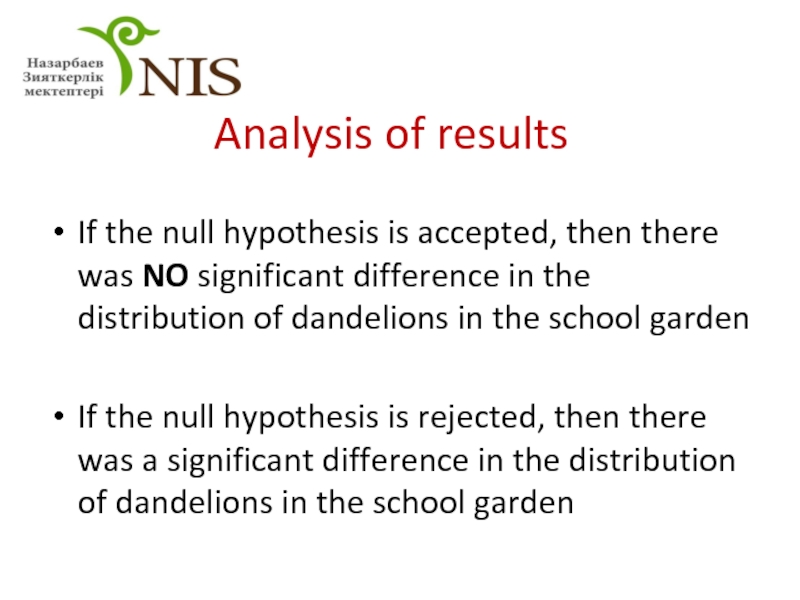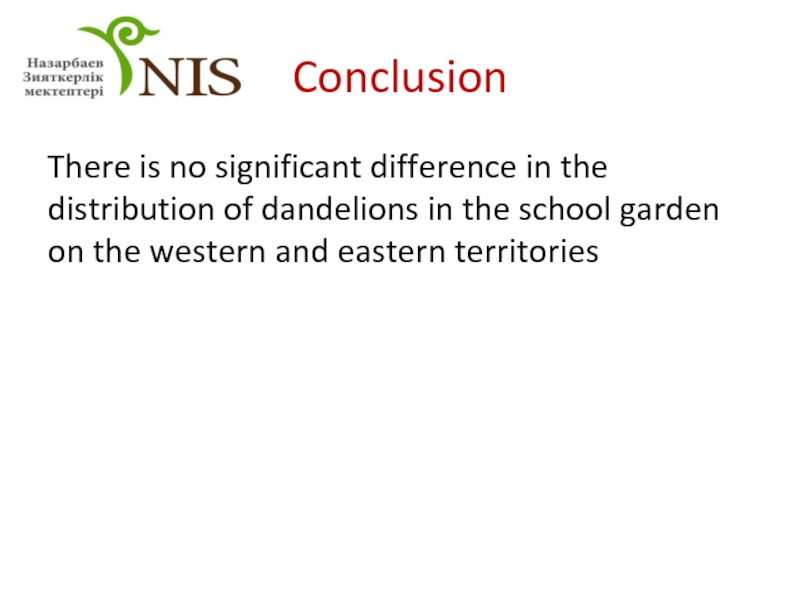- Главная
- Разное
- Дизайн
- Бизнес и предпринимательство
- Аналитика
- Образование
- Развлечения
- Красота и здоровье
- Финансы
- Государство
- Путешествия
- Спорт
- Недвижимость
- Армия
- Графика
- Культурология
- Еда и кулинария
- Лингвистика
- Английский язык
- Астрономия
- Алгебра
- Биология
- География
- Детские презентации
- Информатика
- История
- Литература
- Маркетинг
- Математика
- Медицина
- Менеджмент
- Музыка
- МХК
- Немецкий язык
- ОБЖ
- Обществознание
- Окружающий мир
- Педагогика
- Русский язык
- Технология
- Физика
- Философия
- Химия
- Шаблоны, картинки для презентаций
- Экология
- Экономика
- Юриспруденция
Area Ecosystem Population презентация
Содержание
- 1. Area Ecosystem Population
- 2. You are a scientist in the field
- 3. Data collection and analysis Methods of mathematical
- 4. Types of statistical test T-test (Student’s
- 5. T-test 2 test groups Determining the differences
- 6. Example of research question Which species of
- 7. Examples of Hypotheses Research Hypotheses
- 8. Methods of ecological research Laboratory method Experimental
- 9. Objectives of field researches Determine (определить) the
- 10. Methods of field research Lay out and
- 12. Example Question: Which part of the school
- 13. Method of research (squares method or key
- 14. Data collection Number of dandelions on the school garden
- 15. Step 1 Calculate the mean value
- 17. Step 2 Calculate the deviation from
- 19. Step 3 Square the deviation from the mean for both the samples
- 21. Step 4 Calculate the sum of the squares
- 23. Step 5 Calculate the variance for both the samples
- 25. Step 6 calculate the value of T using the formula provided in the Table
- 26. T –value Х1 - среднее значение
- 27. Answer 2,14
- 28. Step 7 Calculate the degree of freedom
- 29. Step 8 Find the critical value using the t- table
- 30. Degree of freedom 2,31
- 31. Data analysis If the T-value is less
- 32. Analysis of results If the null hypothesis
- 33. Conclusion There is no significant difference in
Слайд 1Test your knowledge
1. Define terms
Area -
Ecosystem -
Population –
2. Home
Questions -
Research Hypotheses –
Null hypotheses -
Alternate hypotheses-
Your topic -
ecology of water bodies
Слайд 2You are a scientist in the field of ecology and you
Слайд 3Data collection and analysis
Methods of mathematical statistics
The application of these methods
Слайд 4Types of statistical test
T-test (Student’s T-test)
Use to test the equality of
(проверка равенства средних значений в двух выборках)
Chi- squared test (X2).
Use if using categorical variables (if you are evaluating the differences between experimental data and expected or hypothetical data)… Example: expected distribution of organisms
(оценка различий между экспериментальными данными и ожидаемыми данными)
Слайд 5T-test
2 test groups
Determining the differences between the two groups
One or more
Слайд 6Example of research question
Which species of pine (Scotch or Kulunda) are more
Scotch pine (сосна обыкновенная)
Kulunda pine (сосна Кулундинская)
Слайд 7Examples of Hypotheses
Research Hypotheses
In Kazakhstan the Kulunda pine is
Statistical hypotheses
Null hypotheses (Ho)
Ho – there is no difference in the prevalence of Scots pine or Kulunda pine
Alternate hypotheses
Ha – there IS a difference in the predominance of Scots pine or Kulunda pine
Слайд 8Methods of ecological research
Laboratory method
Experimental and experimental method
Field method
The objects of
Слайд 9Objectives of field researches
Determine (определить)
the distribution (распространение), abundance (численность) and quality
the influence of abiotic, biotic, anthropogenic factors on organisms
Слайд 10Methods of field research
Lay out and describe a sample area (закладка
The sizes of sample areas (squares) for groups of plants are 1, 10, 100 m², for forests - an area of 100 - 5000 m²
The main indicator of the research is the quantitative registration of organisms
Слайд 12Example
Question: Which part of the school garden has more dandelions?
Research hypothesis:
Null
Alternate hypothesis:
Слайд 13Method of research (squares method or key sites) метод квадратов или
Select the sample area.
Lay out a square grid of known size.
Count the dandelions in each grid.
Repeat this 5 times for both the locations.
Tabulate the data.
Analyze the data.
Слайд 17Step 2
Calculate the deviation from mean by subtracting the mean from
Рассчитать отклонение от среднего значения путем вычитания среднего по величине X для обоих образцов.
Слайд 26T –value
Х1 - среднее значение выборки 1
Х2 - среднее значение
S1²- дисперсия выборки 1
S2²- дисперсия выборки 2
N₁ - частота выборки 1
N₂ - частота выборки 2
Слайд 31Data analysis
If the T-value is less than the critical value, then
If the T-value is bigger than the critical value, the null hypothesis should be rejected Если Т-значение больше, чем критическое значение следует отклонить нулевую гипотезу
Null hypothesis: There are no differences in the number of dandelions on the western and eastern sides of the school garden
2,14 2,31
Слайд 32Analysis of results
If the null hypothesis is accepted, then there was
If the null hypothesis is rejected, then there was a significant difference in the distribution of dandelions in the school garden


